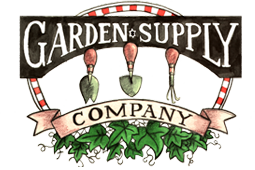Did you know that a high number of pollinators equates to a very healthy ecosystem? The more pollinators, the more biodiversity of plants there is. In fact, some plants are entirely dependent on the help of pollinators to pollinate and reproduce. The term pollinator describes an animal that moves pollen between parts of a flower and includes butterflies, bees, birds, bats, and other insects and mammals. It's certainly worthwhile to create a garden which is pollinator-friendly. Not only will you get to see increased wildlife activity, but you will also be doing a favor for the environment. Pollinators are attracted to flowers by their color or scent, and flowers bloom at different times of the day depending on what type of pollinators they want to attract. Flowers that bloom during the day are generally bright colors and trying to attract bees, butterflies, or other insects. Flowers that bloom at night are usually sweet smelling with a pale color to attract moths and bats.
To create a garden for pollinators, try to have plants that bloom at various times of the year, so that there is always something for them to snack on. Different types of pollinators have different habits and need pollen or nectar at different times of the year. Plant in clumps as opposed to a single plant, and consider using species native to your area. Native plants are more likely to survive and thrive, plus, they are best suited to nourish your local pollinator population. Old-fashioned flower varieties are best for pollinators. Avoid using modern hybrids because many have been bred to have double-flowers, and don't have the pollen or nectar that pollinating species are looking for. Gardens with a wide variety of plants are most attractive to pollinating species.
Other garden features can make your garden more livable for pollinators. Just like any living being, they need food, shelter, and water. A butterfly house is a good way to invite butterflies into your garden. If you decide to install a butterfly house, consider growing plants which their larvae can eat (and be prepared to see some munched-on leaves). Plants such as milkweeds, dogwoods, and verbena are all excellent choices. Having a shallow dish of water helps pollinators, especially those in the midst of a long migration. Keep in mind: butterflies cannot drink open water and, instead, must drink from wet soil or sand.
It’s important to carefully consider the use of pesticides when planting for pollinators. The chemicals can be harmful to them if ingested or if they land on a plant surface that has been sprayed. Fast-acting, short-residual options are best if you must use pesticides, and try to find the least toxic pesticides possible. Also, spray at night, when pollinators like bees are least likely to be active. Your safest bet is to steer clear of these chemicals altogether.
In summary, here are our tips for starting a pollinator-friendly garden:
Plant a variety of flowers that bloom at different times of the year
Stick to old-fashioned plants
Plant in clumps
Use native species
Add elements which provide water and shelter
Avoid pesticides when possible
Here are some suggestions for pollinator-friendly plants:
Honeysuckle
Bee balm
Coneflower
Sunflowers
Zinnia
Black-eyed Susan
Geranium
Shasta daisy
Milkweed
Spider wort
Catmint
Anise hyssop
Passion flower
Hydrangea
Azalea
Mountain mint
Goldenrod
Joe-Pye weed
Butterfly bush
Salvia
Dogwood
Violet



